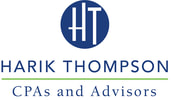|
Leave-sharing programs allow employees with unused leave to donate or share their time off with employees who have exhausted their own accrued leave. On the upside, leave-sharing programs can:
That said, there are some potential pitfalls to be aware of. Federal taxes While federal law does not forbid employers from offering leave-sharing programs, there may be tax implications for the donor and the employee who receives the donated leave. The IRS regards employer-sponsored leave-sharing programs as an assignment of income that is taxable to both the donor and the recipient. This means the donated leave amount is subject to tax withholding and must be included in both the donor's and the recipient's Form W-2 wages. However, this generally happens only when the leave is taken for reasons outside of medical emergencies and major disasters. So if the leave is used for a "medical emergency" or a "major disaster" as defined by federal law, only the recipient must pay taxes on the donated leave amount. (The donor is excluded from taxation.) A "medical emergency" is a medical condition of the employee or a family member that will result in the employee being away from work for a prolonged period of time. Additionally, the employee will suffer a substantial loss of income because they've exhausted their paid leave. A "major disaster" is a disaster that is declared by the president and has an adverse impact on the donated-leave recipient. State law Employers must also review state law for applicable requirements. The state, for example, may dictate which types of leave can be donated to a leave-sharing program. Discrimination Not administering the leave-sharing program fairly and consistently could lead to discrimination claims by employees. Therefore, you must establish clear eligibility rules and apply them equally across all employee groups. It's also a best practice to have employees donate their time off to a general leave bank or pool instead of permitting them to donate directly to a specific employee. This can help prevent issues with favoritism and stop certain employees from unfairly getting more time off than others. Additional concerns
Designing a leave-sharing program and drafting related policies are complex processes that can go awry without proper support. The same goes for implementing, administering and maintaining the program. So if you'd like to offer a leave-sharing program, be sure to seek advice from experts, including those in the legal, benefits and tax fields. Comments are closed.
|
Newsletter articles are posted every 2 weeks. If you would like to have our e-newsletter delivered directly to your inbox, please sign up. Your information is confidential; you can unsubscribe at any time. Subscribe. Categories
All
|
Proudly powered by Weebly

 RSS Feed
RSS Feed